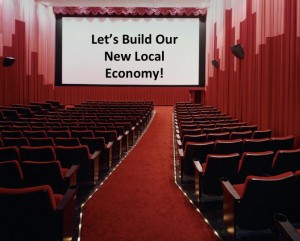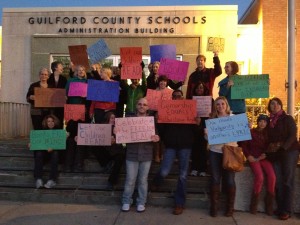Next Wednesday, January 26th, F4DC is hosting the second movie in its Film Series on people building grassroots economies anchored in communities. We’ll be showing SHIFT CHANGE, a film about worker-owned cooperatives, at 6 pm at the Carousel Theatre. Click here for more info about the screening.
If you’ve looked around our website a bit, you know that we’re excited about cooperative business as a key to rebuilding the economy. Here I want to say a bit about why worker-owned cooperatives, in particular, can make a difference. On the outside, they seem to function much like conventional businesses: they sell goods and services at a price that allows them to cover their costs (rent, labor, raw materials, etc.), and then some. Like any business, they have to make a profit; otherwise they have to shut down.
It’s this question of profit—its place in the grand scheme of things—that distinguishes worker owned coops from other kinds of businesses. Because the workers themselves own the business, they don’t make business decisions simply on the basis of maximizing profit, like most conventional businesses do (and all corporations are required to do by their very charters). A worker coop’s decision-making is based on the long-term need to sustain the business in a way that keeps providing the worker-owners with good jobs. So, for example, a worker coop isn’t going to up and move to a new location where lower wages prevail.
This isn’t to say that sometimes worker coops don’t have to make tough decisions, even cutting hours, wage rates, or jobs during tight times. This has happened at lots of worker coops around the globe during the current recession. But because the workers themselves are democratically making the decisions, it’s done with an eye to the long-term well-being of the workers as a group, rather than short-term profit-taking.
It turns out that this kind of long-term thinking and democratic governance leads to worker owned businesses having better track records for economic resilience, surviving downturns in greater proportions and making faster comebacks. This has been thoroughly documented in a study (pdf) that analyzed data from 50,000 employee-owned enterprises in 17 countries.
Contrast the inherent “long-termism” of worker-owned cooperatives to the “short-termism” of corporations focused on maximizing profit for shareholders who have no connection to the day-to-day operation of a business or the community in which it exists. Down the road from us, in Rocky Mount, the closure of the Merita Interstate Brands Bakery put 286 people out of work. That’s a lot of jobs in a town the size of Rocky Mount. If you followed the news last November, this closure was part of a national strategy by Hostess, the parent company, to liquidate all its bakery holdings, throwing more than 18,000 workers out of their jobs. Initially, the company tried to blame the liquidation on striking workers, but it later came to light that the company had long planned the closures, well before any strikes took place. Furthermore, Hostess had been owned and managed by a sequence of private equity firms that had no expertise or interest in operating an ongoing bakery business. They were essentially loading the company up with debt in order to pay outrageous compensation to top executives. Oh yeah, and they raided the workers’ pension fund while they were at it.
Could the Rocky Mount bakers – the people who actually do the work of the bakery—operate their own bakery? I don’t see why not: collectively, they know how to work in and operate a bakery, and people will always need bread. Sure, some work would have to be done to develop a viable business model and some money would have to be raised, but that’s what’s involved for anyone who takes over the business. It wouldn’t be the first time workers came together to revive a failed business: former workers at Republic Windows have formed a new worker-owned business called New Era Windows. They have raised money from a broad base of community supporters and unions so they can buy the now-closed factory and its contracts.
I am still weighing whether the strategy of converting failing corporate enterprises to worker-owned businesses can succeed at scale. Some people say that such businesses tend to have been mismanaged for so long that they make for very weak beginnings that are hard to overcome. Other people say that the existence of a group of skilled workers who already know how to work together makes for a good basis for a successful enterprise. It’s probably a case-by-case kind of thing.
In any case: come on out to see SHIFT CHANGE next week, and get inspired about the potential of worker-owned coops! Whether launched from scratch or as a conversion, worker-owned businesses need to be a big part of rebuilding our local economy!














